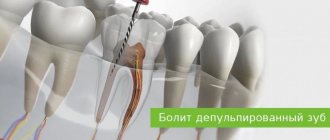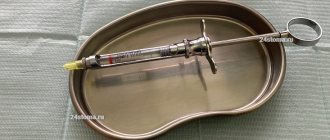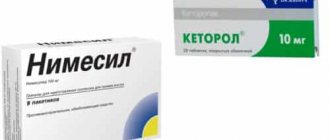| Way | Detailed description |
| Surgical method or extracapsular removal | The classic method of tonsil removal, which until recently was used throughout the world. The doctor uses a scalpel and wire thread. The tonsils are excised entirely, leaving difficult-to-heal wounds. Very long rehabilitation. Currently, the method is used in rare cases, for example, when there are contraindications for other methods or there is simply no necessary equipment. |
| IR laser or thermal welding | The tonsils are still excised, but this time with a powerful infrared laser (IR laser). The bottom line is that the laser hits the target and does not heat neighboring tissues. At the site of dissection, immediate tissue adhesion occurs, which entails minor blood loss and more comfortable rehabilitation. |
| Electrocoagulation | The electrical method is used quite rarely, as unpleasant consequences are possible. The excision takes place under the influence of high-frequency current, while the blood vessels are instantly sealed, and blood loss is minimal. However, electrocoagulation produces extremely high temperatures, and adjacent tissue may suffer thermal burns. |
| Carbon dioxide laser | An original method in which the tonsils simply evaporate (evaporate) under the influence of a laser. The tonsils can be reduced or removed completely. With this method, blood loss is insignificant, and recovery is comfortable. |
| Ultrasonic removal | A laser is used again, which many doctors call an ultrasonic scalpel. In this case, the tonsils are exposed to high-frequency ultrasound (over 26 kHz), which is like a sharp scalpel. Damaged vessels are sealed (coagulated). Recovery after the procedure is quite fast. |
| Cryodestruction | The tonsils are not excised using this method. Liquid nitrogen is used, which completely freezes the lymphoid tissue. The procedure itself is painless, but the rejection of frozen tissue occurs over time and is quite unpleasant. There is a possibility of repeating the procedure. |
| Microdebrider | Not the most humane type of procedure. Excision occurs with a special device (microdebrider), on the head of which sharp blades are placed. Rotating at great speed, they cut off the tonsil. Partial excision is possible. The recovery is quite long. |
Safe and least traumatic methods are thermal welding, coblation and electrocoagulation. This is due to the almost complete absence of blood during the operation and subsequent problem-free healing. However, laser-based methods are not used if the child is under 10 years old. It is extremely difficult for a child of this age to sit still, which can cause serious burns to the healthy tissues of the pharynx.
Any method of tonsillectomy is not complicated; doctors have long honed such skills and techniques. The procedure itself usually takes no more than one and a half hours. The pain is treated with local anesthesia, and in extremely rare cases with general anesthesia.
The most difficult moment of the entire operation is associated with the child himself. Complete immobility is required; for this, parents can be invited to the procedure. You need to try to calm the baby down and explain that there is nothing wrong with this - the procedure is completely painless.
A correctly performed procedure does not negatively affect the child’s health. Problems can arise if healthy tonsils are removed, as they are an important part of the body's defenses. But if the tonsils themselves are a source of infection, it is hardly worth refusing the operation. If tonsillectomy does occur, during the recovery period after surgery, Imudon® helps protect against infections2.
Imudon® is the only* local immunostimulant in the form of lozenges. A detailed regimen of use is presented in the instructions for the drug.
Palatine tonsils
Palatine tonsils are small structures that actually look like almond grains and are located between the arches of the palate. In common parlance they are sometimes called “tonsils.” They consist of lymphoid tissue enclosed in a connective tissue capsule. The tonsils have lacunae - slits that greatly increase the surface of the palatine tonsil. They are part of a lymphatic “ring” surrounding the pharynx. Their role is to capture “samples” of microbes entering the body with air, water and food, and report information about them to other immune organs, which produce antibodies - proteins that destroy microbes. The first “acquaintance” with the microbe occurs in the tonsils, which allows the body to fight it. This function of the tonsils is especially important in the first years of life. With age, it becomes less significant, since the same work is performed by lymphoid tissue located in the thickness of the mucous membrane throughout the respiratory tract.
The anatomical features of the tonsils and their constant contact with infection in the oral cavity create the conditions for the development of inflammation of the tonsils - tonsillitis. This inflammation can be acute or chronic.
Acute tonsillitis
Acute tonsillitis - tonsillitis - is most often caused by streptococci. It must be remembered that they are transmitted to others by coughing and sneezing, so a patient with a sore throat needs to be isolated - placed in a separate ventilated room, with separate dishes allocated for him.
Sore throat is an infectious disease accompanied by high fever, general weakness, aching muscles, joints, etc., with local manifestations on the palatine tonsils in the form of swelling, redness, ulcers or plaque. This pus is an accumulation of dead cells that fight the causative agent of sore throat. Often, with a sore throat, an ichorous (putrid) unpleasant odor is felt at a distance from the patient. It is emitted by dead microbes, from which the toxin has been released, placed in the pharynx and absorbed into the body through the vessels, through breathing - into the lungs, through the digestive tract. There is a powerful bacteremia - the body is filled with toxic substances and bacteria.
The danger of sore throat is that the body, fighting the streptococcus that causes sore throat, destroys its own organs. Streptococcus contains a special protein similar to some proteins in the human body. Because of this similarity, the body’s protective antibodies against streptococcus begin to attack its own tissues in the heart, kidneys, and joints. This is a complication of angina.
If a sore throat is not treated correctly, complications may include heart defects, kidney disease - glomerulonephritis, and joint damage. It is believed that the huge number of heart defects in modern 70-80 year old people is due to the fact that in the 30s, when they were children, there were no drugs to combat such microbes. These drugs were invented only in the late 30s and early 40s.
Sore throats can be complicated by a paratonsillar abscess - suppuration of the soft tissue around the tonsil. This is a very serious disease that requires hospital treatment.
It is important to note that many people often mistake any sore throat for a sore throat. Typically, a sore throat, especially a very severe one, is a sign of acute or exacerbation of chronic pharyngitis, and not a sore throat. In any case, the diagnosis of angina should be made by a doctor, preferably an otolaryngologist.
Chronic tonsillitis
Chronic tonsillitis is an active chronic inflammatory process in the tonsils with periodic exacerbations and a general infectious-allergic reaction.
If a sore throat occurs with severe sore throat and high fever, then chronic tonsillitis may manifest itself with minor symptoms, and patients do not consult a doctor for a long time. Meanwhile, chronic infection in the tonsils leads to diseases such as rheumatism, kidney disease, heart disease and a number of others. Therefore, chronic tonsillitis must be treated.
Signs of chronic tonsillitis may include:
• Accumulation of “plugs” in the lacunae of the tonsils - whitish cheesy masses with an unpleasant odor, which are sometimes independently released from the tonsils. • A slight increase in body temperature that lasts weeks or months (low-grade fever). • Frequent sore throats. Sore throats that occur more than once a year are considered frequent.
In addition, there are signs of chronic tonsillitis, which are determined by the doctor when examining the pharynx.
Also, there is a method for determining the functional activity of the palatine tonsils, on the basis of which the doctor makes a decision - to treat the tonsils conservatively or to remove them.
Treatment of tonsillitis is aimed at combating infectious inflammation of the tonsils. Antibiotics are prescribed for this. For local effects on the tonsils, gargling with various antiseptic solutions, physiotherapy, lubrication of the tonsils, and washing the lacunae of the tonsils with antibiotics or antiseptics are used.
If conservative treatment is ineffective, surgical intervention (tonsillectomy) is used.
Sources
1. Palchun V.T.
Otorhinolaryngology: national guidelines. M.: GEOTAR-Media, 2016. 2. Karpishchenko S.A., Svistushkin S.M. Chronic tonsillitis and tonsillitis. Immunological and clinical aspects. St. Petersburg: Dialogue, 2017.
3. Lukan N.V., Sambulov V.I., Filatova E.V. Conservative treatment of various forms of chronic tonsillitis. Almanac of Clinical Medicine, 2010, 23: 37-41.
4. Belov, B.S., Shcherbakova M.Yu. A-streptococcal tonsillitis: modern aspects. Pediatrics. 2009, 88(5): 127-135.
5. Turovsky A.B, Kolbanova I.G. Chronic tonsillitis - modern concepts. Doctor.RU, 2009, 49(5): 16-21.
Tonsillectomy – “removal of tonsils”, “removal of tonsils”.
Indications for this operation are:
• frequent sore throats, severe, with high fever and prolonged low-grade fever; • unsuccessful conservative treatment; • risk of complications (glomerulonephritis, rheumatism, hemorrhagic vasculitis and other infectious and allergic diseases); • recurrent and chronic diseases of the ENT organs; • paratonsillar abscess; • endocrine diseases against the background of chronic tonsillitis; • sleep apnea syndrome caused by enlarged tonsils and adenoids.
There are contraindications for tonsillectomy. It is not recommended to operate during acute or exacerbation of chronic infectious or inflammatory diseases of internal organs and ENT organs; dental caries; hypertension; furunculosis; period of influenza outbreaks; menstruation.
Absolute contraindications are:
• blood diseases (acute and chronic leukemia, hemorrhagic diathesis; immune hemopathy and capillary toxicosis in the acute stage); • vascular anomalies of the pharynx (angiodysplasia, aneurysms, submucosal pulsation of the vessel); • severe neuropsychiatric diseases; • active form of pulmonary tuberculosis; • severe form of diabetes mellitus; • decompensated conditions in diseases of the heart, lungs, liver and kidneys.
The issue of surgical treatment of chronic tonsillitis in patients with concomitant diseases must be approached strictly individually. The final decision is made by the otolaryngologist together with the therapist.
What type of pain relief is best to choose?
Tonsillectomy was previously considered an operation that did not require more severe pain relief than local anesthetics (infiltrative). It should be noted that a feature of operations performed on the ENT organs, even minor ones, is pronounced subjective discomfort in the patient - emotionally, any interventions in the head and neck area are much more difficult to tolerate than interventions in the torso and limbs. It is the fear of surgery that stops many patients. The solution to this problem is general anesthesia, which became possible thanks to the active development of anesthesiology and has recently been widely used during this intervention. Also, the possibility of general anesthesia solves the issue of performing surgery in patients who have a history of allergic reactions to local anesthetics.
Preparing for tonsillectomy (removal of tonsils)
In preparation for the operation, a clinical examination is carried out to ensure the safety of the surgical intervention: determination of blood group and Rh factor, blood test, urine test, determination of HIV and Australian antigen, sanitation of the oral cavity, in young children - chest x-ray to exclude thymomegaly; a thorough examination to diagnose diseases that may complicate the course of the operation and postoperative period; On the eve of the operation for children, a certificate is obtained from the clinic stating that there is no contact with carriers of childhood infections.
Several weeks before surgery, you should not take aspirin or medications containing it. It impairs blood clotting and increases the risk of bleeding. You need to tell your doctor if you are constantly taking any medications, if you are allergic to anything, if you have had reactions to a blood transfusion, if you have an increased tendency to bleed.
You should not eat or drink anything before the operation. This must be especially monitored if you plan to operate on a child. A light dinner is allowed the night before.
Difference from tonsillotomy
Along with tonsillectomy, there is another operation with a similar name - tonsillotomy, in which enlarged tonsils are removed not entirely, but partially (usually in children). The indication for such an operation is the hypertrophy of these tonsils, when they occupy the entire space from the anterior palatine arch to the midline of the pharynx. With tonsillotomy, only the “excess” of enlarged tonsils is removed, returning them to normal size. Tonsillotomy is less traumatic than radical removal of the tonsils, and allows you to preserve their protective functions.
Surgery to remove tonsils
The operation is usually performed under general anesthesia. In extreme cases, tonsillectomy is performed under local anesthesia. For this, a solution of ultracaine is usually used. General anesthesia is usually performed using a combination of inhaled and intravenous anesthetic.
Classic tonsillectomy is as follows: after infiltration of the paratonsillar region, through an arcuate incision along the edge of the anterior arch, the upper pole of the tonsil is bluntly isolated with an elevator and grasped with forceps or a clamp. Then the tonsil is isolated with an elevator to the lower pole. The separated tonsil is removed with a special loop. Bleeding is stopped by tamponade of the niche, coagulation of blood vessels, or application of ligatures. The duration of a tonsillectomy is usually 20-30 minutes.
The numerous methods of tonsillectomy that exist today do not fundamentally change the essence of the operation. The use of lasers, radiofrequency surgery, microdebrider, and ultrasonic scalpel is aimed at reducing tissue bleeding and has virtually no effect on healing time or the severity of pain in the postoperative period.
IF YOU DECIDE TO HAVE AN OPERATION, YOU NEED TO CHOOSE THE TECHNIQUE THAT IS BEST IN THE DOCTOR YOU TRUST.
Surgical options
Today there are many methods for removing tonsils, but the most common include [1, 3]:
- Classic (standard) tonsillectomy. Enucleation of tonsils using surgical instruments.
- Extracapsular tonsillectomy. The doctor, using scissors and a loop, cuts off the palatine tonsil along with the capsule, then applies sutures. The main disadvantage of this method is the high risk of bleeding both during and after surgery.
- Using an ultrasonic scalpel. Thanks to high-frequency sound vibrations, the temperature of surrounding tissues remains low enough to avoid serious damage.
- Coblation (bipolar radiofrequency ablation). This method has become widespread in otorhinolaryngology due to the minimization of pain and postoperative risks, as well as the reduction of the recovery period. This is due to the absence of thermal effects: the radiofrequency energy used separates the molecular bonds between tissues, allowing them to be cut almost painlessly and bloodlessly.
After removal of tonsils
After the operation, the patient is placed on his side in a bed with a low pillow. Drinking is allowed no earlier than after 6-8 hours.
Constant monitoring is carried out in order to timely diagnose possible bleeding. On the day of surgery, fasting is prescribed. In the following days, a gentle diet (semi-liquid and non-hot food) is prescribed. They are treated with drugs that increase blood clotting, and aerosols with anesthetics are used; in the presence of metatonsillar complications, a short course of antibacterial therapy is carried out. Bed rest is observed for 2-3 days. Fibrinous plaque in the tonsillar niches usually disappears on the 7-10th day.
Recovery period
In most cases, after the operation the patient remains under observation in the hospital for no more than a day. This period can be extended with tonsillectomy using the classical surgical method.
Pain is normal during the first 24 hours. To relieve pain, you can use analgesics and non-steroidal anti-inflammatory drugs prescribed by a doctor. Adults should not eat on the first day after the intervention; children should not eat for 4-6 hours.
In the first 3-4 days after surgery, physical activity should be minimized. Within 5-6 days, scabs form on the wound surface after removal of the tonsils. They should not be removed by force; the crusts should come off on their own.
For 7-10 days you cannot visit the bathhouse, sauna, or do facial skin steaming procedures. When exposed to high temperatures, blood vessels dilate and bleeding may occur.
During the recovery period, it is important to follow a special diet. In the first week, you need to exclude solid foods, spicy, fried, and sour foods from the menu. Strong tea, coffee, carbonated drinks, and alcohol are also prohibited. You should prefer mushy food, pureed soups, pureed dishes. Drinks allowed are water, fruit drinks, compotes, and rosehip decoction.
Complications after tonsillectomy
The most common complication is bleeding from the tonsillar niches, mainly in the early postoperative period in the presence of concomitant diseases;
bleeding can be vascular and parenchymal. Vascular bleeding is stopped with hemostatic clamps followed by ligation of the vessel. In case of parenchymal bleeding, the niche is tamponade with hemostatic agents (if it is necessary to hold the tampon for a long time in the niche above it, the palatine arches are sutured). Other complications are extremely rare: subcutaneous emphysema, acute inflammation of the lingual tonsil, stomatitis, glossitis, acute otitis media, exacerbation of chronic diseases of the ENT organs, exacerbation of chronic diseases of the internal organs, phlegmon of the neck, paresis of the cranial nerves, pharyngeal hematoma. [/td]









